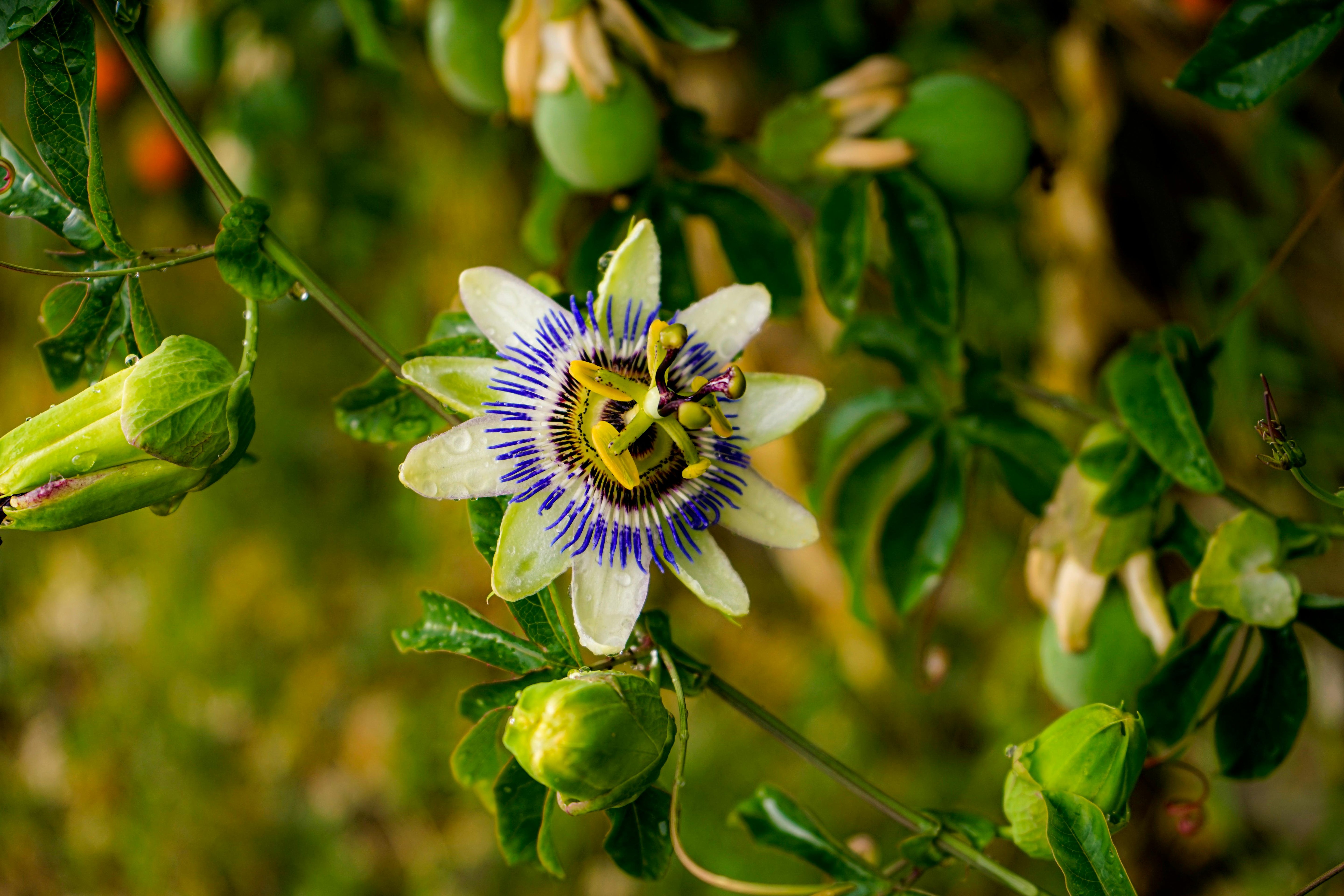Insulin resistance is a central issue in managing prediabetes and type 2 diabetes (T2D). Herbs that act as insulin sensitizers, also known as hypoglycemic herbs, can play an important role in supporting blood sugar regulation as part of a comprehensive treatment protocol. However, it’s essential to note that the herbs discussed here are specifically for type 2 diabetes and prediabetes (also referred to as non-insulin-dependent diabetes mellitus, or NIDDM). These herbs are not usually effective for type 1 diabetes (insulin-dependent diabetes mellitus or IDDM), where the body cannot produce insulin due to damage to the beta cells in the pancreas. In this case, insulin therapy remains crucial.
As always while herbs can be effective, they should be used in conjunction with lifestyle changes and dietary adjustments as we are always aiming to address the underlying issues at hand. Genetics can play a role in diabetes development, but lifestyle factors like poor diet, lack of exercise, and stress are often key contributors. These herbs prove to also be quite effective making the need to monitor glucose levels in the blood and urine crucial, especially when using them in combination with medications that lower blood sugar. All in all, using insulin-sensitizing herbs, alongside a healthy diet and regular physical activity, offers the potential for better glucose control and overall health improvement.
What Is Insulin Resistance?
While you probably are no stranger to what is if you’re reading this, here is a brief overview! Insulin resistance occurs when the body’s cells no longer respond effectively to insulin. The pancreas produces insulin, a hormone that helps transport glucose (sugar) from the bloodstream into cells for energy. Typically, after eating, the pancreas releases insulin to manage blood sugar levels. Once the cells have absorbed enough glucose, the pancreas receives feedback to stop producing more insulin. In insulin resistance, this feedback mechanism malfunctions, causing the pancreas to continue producing insulin, even though the body’s cells are not absorbing it. This leads to elevated insulin levels in the blood, which is eventually stored as fat—particularly around the liver.
Over time, this buildup of insulin can contribute to a range of health issues, including fatty liver disease, weight gain, polycystic ovary syndrome (PCOS), kidney problems, and cardiovascular disease. The excess insulin can also disrupt the normal function of blood vessels, contributing to hypertension and other circulatory problems.
10 Hypoglycemic Herbs
Here is a list of herbs that can support blood sugar regulation in individuals with insulin resistance, prediabetes, or type 2 diabetes. These herbs may help improve insulin sensitivity, lower blood sugar levels, and promote overall metabolic health. In addition to their role in blood sugar control, many of these herbs also support the cardiovascular system, adrenals, endocrine system, and liver—all of which play a vital role in maintaining healthy blood sugar levels.
1. Bitter Melon, Momordica charantia
Bitter melon is a potent herb with both antiglycemic and antilipidemic effects, making it a valuable ally in managing blood sugar. Research in both humans and animals has shown that bitter melon helps regulate blood sugar by stimulating the protein GLUT-4, which allows muscle and fat cells to take in glucose more efficiently. This helps lower blood glucose levels. Additionally, bitter melon activates the AMPK enzyme, which encourages fat burning and improves glucose disposal for energy.
Bitter melon contains two key compounds, Charantin and Momordin, which play a major role in its ability to reduce glucose stored in the liver, lower fat levels in the blood, and enhance glucose uptake by the cells. As a result, it helps reduce circulating blood glucose, supporting better insulin sensitivity.
2. Bilberry, Vaccinium spp.
Bilberries are rich in antioxidants that support vascular function and help manage diabetes. Both the berries and leaves have benefits, with the berries offering more antioxidants and the leaves being more astringent. Bilberries are antilipidemic, improving fat levels in the blood, and can help reduce insulin resistance. They also slow glucose absorption in the gut, making them useful for blood sugar control.
Bilberries are especially beneficial for diabetic retinopathy, as they support eye health by protecting blood vessels in the eyes. Additionally, they help with kidney function, addressing complications related to diabetes. Beyond managing blood sugar, bilberries support overall health and protect against diabetes-related issues.
3. Cinnamon, Cinnamomum cassia
Cinnamon is more than just a kitchen spice; it’s a well-researched herb known for its antiglycemic properties. This herb is highly effective in increasing glucose uptake, lowering blood sugar levels, and reducing blood lipid levels, including cholesterol. One way cinnamon enhances insulin sensitivity is by promoting the conversion of glucose into glycogen for storage. While some studies are still unclear about its exact mechanisms, cinnamon remains a proven ally in managing diabetes and supporting overall metabolic health.
4. Fenugreek, Trigonella foenum-graecum
Fenugreek is another spice that offers far more than flavor —it’s a potent herb for lowering blood sugar and improving insulin sensitivity. Like many herbs in this category, fenugreek is also antilipidemic, helping reduce cholesterol levels. Fenugreek is a galactagogue, meaning it stimulates milk production, and it’s interesting to note that many galactagogue herbs also enhance insulin sensitivity. This may be due to the hormonal effects during breastfeeding, as elevated levels of prolactin and oxytocin—hormones that help with milk production and ejection—are linked to better insulin function.
Fenugreek’s impact on the endocrine system may explain some of its effects. The herb contains phytoestrogens that can modulate hormones like estrogen and progesterone, which in turn support insulin sensitivity. Two key alkaloids in fenugreek, trigonelline and fenugrecin, play a major role in its hypoglycemic action, making it a valuable herb for blood sugar control and overall metabolic health.
5. Garlic, Allium sativum
Garlic just got a little more tasty (as if that’s possible) because it’s not only a delicious antiviral and antibacterial, but it also has impressive hypoglycemic action. This is thanks to its sulfur-containing compounds, particularly allicin, which is formed when garlic is crushed. When garlic is crushed, the enzyme alliinase converts alliin into allicin, the key compound responsible for its medicinal effects. This is an important consideration when using garlic medicinally—crushing it is essential to unlock its full potential.
Garlic has been shown to aid glycogenesis (liver glycogen synthesis), improve glucose uptake by cells, and stimulate insulin secretion. It also supports cortical function (regulating stress hormones) and contains powerful antioxidants that help protect the body from oxidative stress.
6. Goat’s Rue, Galega officinalis
Goat’s rue is both a galactagogue and a hypoglycemic herb, making it especially valuable for those managing blood sugar levels. Interestingly, the biguanide drug Metformin, commonly prescribed for type 2 diabetes, was originally synthesized from goat’s rue. The key compound, galegine (or isoamylene guanidine), is responsible for its blood sugar-lowering effects.
Goat’s rue works by increasing glucose absorption in the gut, inhibiting gluconeogenesis (the production of new glucose), and improving overall blood sugar metabolism.
7. Gymnema, Gymnema sylvestre
When it comes to hypoglycemic herbs, Gymnema is one of the most well-regarded. Known for its unique ability to temporarily interfere with the taste buds’ ability to taste sweetness, this effect is due to compounds like gurmarin and gymnemic acid. It’s a fun experiment I recommend everyone try at least once in their life, but it’s also useful for curbing sugar cravings. Simply take a bit of Gymnema extract when cravings arise, and it can help reduce the desire for sweets.
Beyond the taste buds, Gymnema works in the gut as well, blocking the absorption of glucose and helping to prevent blood sugar spikes after meals. Gymnema also supports the regeneration of beta cells in the pancreas, which is particularly useful in managing insulin resistance and may be beneficial for individuals with type 1 diabetes (though it should never replace insulin therapy). Additionally, it improves insulin sensitivity.
8. Holy Basil, Ocimum sanctum
Holy Basil, or Tulsi, is a key herb in Ayurvedic medicine and one of my top hypoglycemic herbs, largely due to its great flavor and high compliance—it’s a delightful addition to many tea blends. Holy basil helps with glycemic control through several mechanisms, including its ability to upregulate glycogenesis in the liver (the conversion of glucose to glycogen) and provide antioxidant support for the liver, helping to detoxify and optimize its function.
Additionally, holy basil increases insulin sensitivity by enhancing cell receptivity to insulin, promoting better glucose uptake and reducing blood sugar levels. As an adaptogen, holy basil also supports the HPA axis (Hypothalamic-Pituitary-Adrenal axis), which plays a crucial role in the body’s stress response. Chronic stress can raise cortisol levels, which in turn can lead to insulin resistance and elevated blood sugar. By balancing the HPA axis and reducing stress, holy basil helps prevent these negative effects, supporting better overall glucose metabolism and improving intercellular signaling for efficient glucose uptake.
9. Milk Thistle, Silybum marianum
When you think of Milk Thistle, you likely think of its powerful effects on the liver, and for good reason. Milk Thistle has long been used to support liver health, particularly through its active compound silymarin, which has been shown to increase the antioxidant glutathione in the liver. Glutathione plays a crucial role in detoxifying the liver and reducing inflammation, making it beneficial for managing liver diseases and improving liver function. This support for liver health also aids blood sugar regulation, as the liver plays a key role in glycogenesis (the conversion of glucose to glycogen for storage).
But Milk Thistle’s benefits go beyond the liver. Silymarin has also been shown to lower blood glucose levels, reduce lipid peroxidation (oxidative damage to fats), and enhance glucose uptake by cells. Additionally, it improves insulin sensitivity, making it a valuable herb for those managing insulin resistance and type 2 diabetes.
Beyond liver and blood sugar health, Milk Thistle also supports kidney health. Since diabetes can cause damage to the kidneys over time, Milk Thistle’s antioxidant and anti-inflammatory properties may help protect the kidneys and support their role in filtering excess glucose from the blood. This makes Milk Thistle a useful herb for managing complications related to diabetic nephropathy and overall kidney function.
10. Olive Leaf, Olea europaea
Olive Leaf has a long history of use in managing metabolic syndrome and insulin resistance. It works as an antilipidemic, helping to lower cholesterol levels and support overall heart health. One of its key active compounds, oleuropein, has been shown to increase glucose uptake by stimulating the GLUT-4 transporter, improving insulin sensitivity, and aiding glucose storage in cells.
Olive Leaf is also rich in anti-inflammatory and antioxidant polyphenols, which are similar to those found in olive oil. These polyphenols have been shown to improve pancreatic beta cell function, which is crucial for insulin production and blood sugar regulation.
In conclusion, I always recommend working with a skilled healthcare practitioner or clinical herbalist when it comes to blood sugar control, especially when incorporating the best herbs for you and your body.
While these herbs offer significant potential for supporting insulin sensitivity and overall metabolic health, it’s essential to approach blood sugar management holistically combining them with positive dietary and lifestyle changes. Herb dosage and delivery methods can vary greatly among individuals and herbs, so doing your research and working with a trained clinical herbalist is key to finding what works best for you! The world of herbs is vast, and it’s exciting to think that these 10 herbs are just a glimpse of the many with hypoglycemic properties.













Leave a comment